Ezine
|
| (.333 member) |
| 03/08/05 12:43 AM |

|
|
|
Didn't take any photos of the shot mountain ducks. Why? Don't know.
 But here are some from the web
But here are some from the webMountain Duck
(Australian Shelduck)
(Tadorna tadornoides)
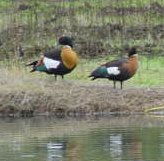
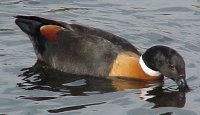
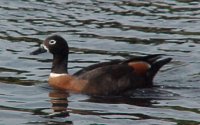
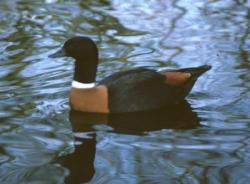
Some info: Vic DSE
Distribution

Distribution and Habitat
Mountain Duck are distributed throughout south-eastern and south-western Australia and inhabit lowland wetlands, both freshwater and saline, which are near pastures or arable land. Being grazers, they feed in pastures, cultivated crops and shallow water.
Identification

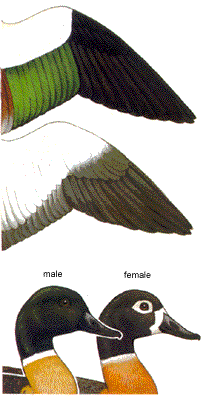
Description
The Mountain Duck is the largest Australian duck. Its dark body contrasts with brilliant white wing patches.
In flight, the Mountain Duck has large, prominent white wing patches on the shoulders of the wing, a dark body, white underwings, chestnut-coloured breast and a white neck ring.
On the water or land, a large duck with a dark head, white neck ring, yellow-brown or chestnut-coloured breast.
The female and young birds have a white ring around the eye and a white face patch.
Status
The Mountain Duck is available for recreational hunting in Victoria, Tasmania and South Australia.
Voice
The Mountain Duck is a very vocal bird, especially in flight. The male has a low-pitched honk and the female has a high-pitched honk.
***
"Mountain Duck are found in Western Australia and in the south-east, but its a rare bird in Queensland and the Northern Territory. If you know what to look for, it shouldn't be difficult to recognise the bird pitching in here; they're Mountain Duck.The pattern on the upperwing is a real give away. On the leading edge of each wing close to the body, is a large white patch and along the trailing edge there are dull green feathers. Usually only the white patches show. The underwing also has a large white patch. The black belly contrasts with the orange breast. Mountain Duck have a black head and neck and a white collar. This one is a male. Females are the same except for some white face markings. In flight Mountain Duck often appear as large black and white birds. Only in good light can you pick out the orange breast and the white collar. Like the Wood Duck we looked at a little earlier, Mountain Duck also show large white wing patches in flight. But with this bird the patches are on the leading edge of the wings and there's also a large white patch below the wing.
Mountain Duck are the largest Australian duck and not likely to be mistaken for anything else. The dark wings and body contrast sharply with the brilliant white wing patches, which can be seen for a long way off. Females and young birds have a white eye and white face patch, which you can see only when they are close up. The male's head is all dark. In good light the chestnut fronts and the pale ring around the necks of male birds can be seen some distance away. The green feathers on the rear of the upperwing are difficult to see, except in very good light. Mountain Duck are much larger than all other game birds and they ride up well out of the water. Although Mountain Duck spent much of their time near the water, they often fly a long way to find pasturelands and weeds stubble, on which they can graze. They sometimes move about in large flocks. The wing beats are slow and often they'll just glide down to water. In a mixed flock it's pretty easy to pick out the Mountain Duck. From the front or back its a little harder, but the white wing patches soon give it away, even in poor light. Sometimes they appear as black and white birds. The honking calls are also easy to remember, and on long flights they would often form 'v' formations or they will follow each other in long strangley lines.
Although Mountain Duck are slow flyers they use their wings well; sometimes dropping down quickly from a great height. These then are the points you should remember: large white wing patches on the leading edges of the upperwing, close to the body, and extensive white areas under the wings. It's a large bird easily picked out on the water or in a mixed flock. The wing beats are slower than most other ducks and quite often they'll glide a long way down to the water or pasture. "